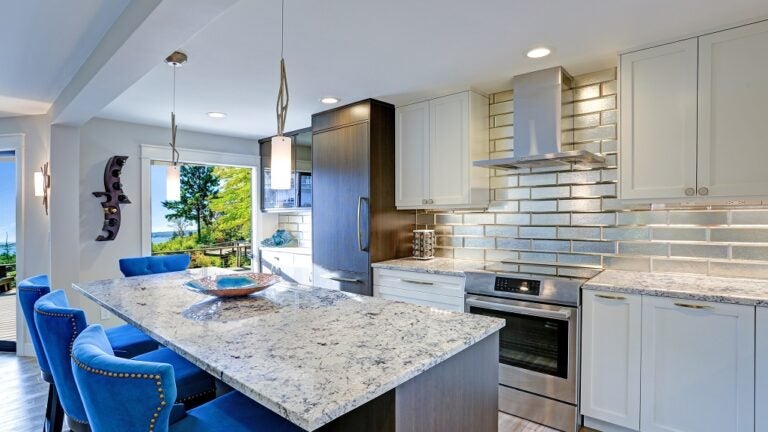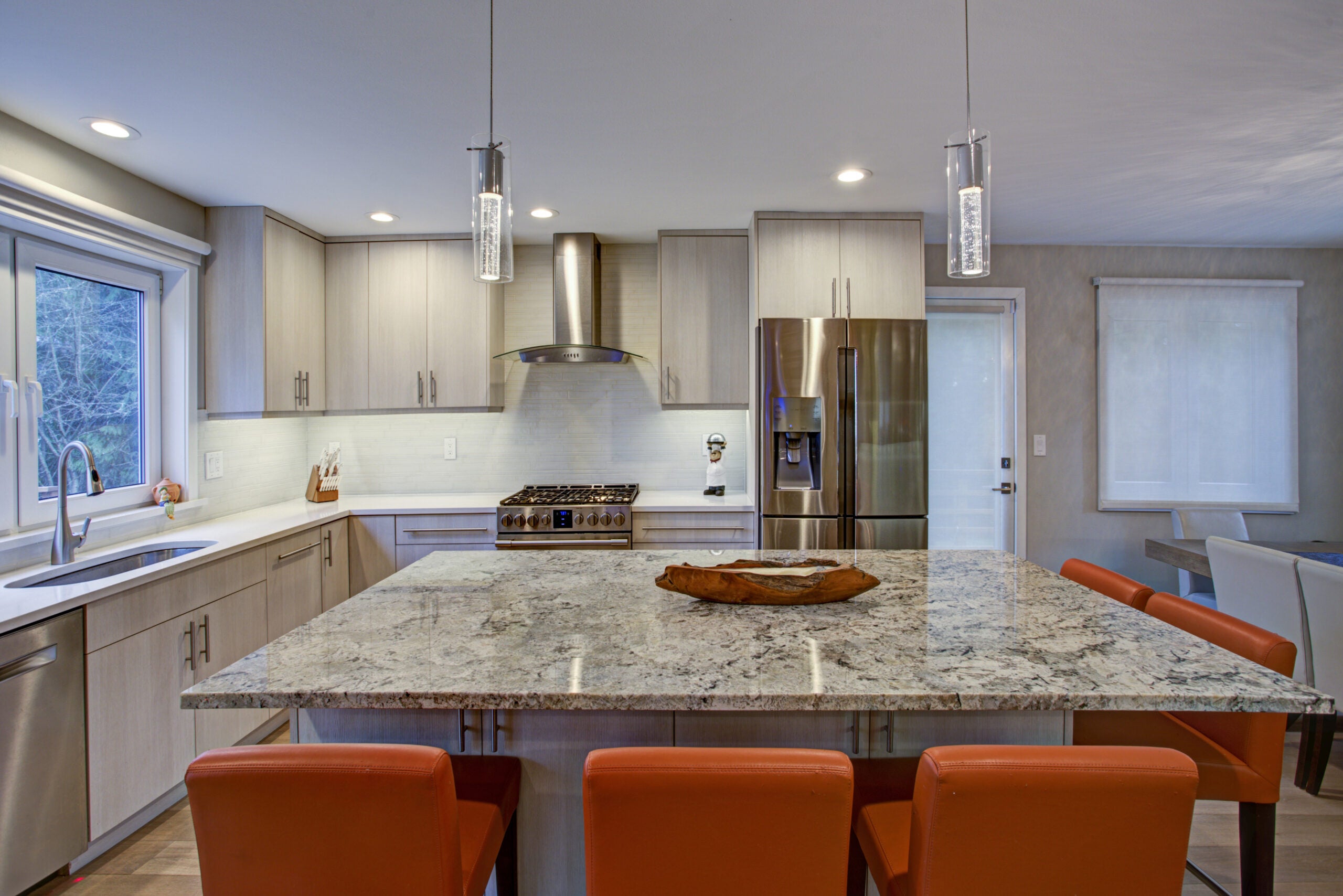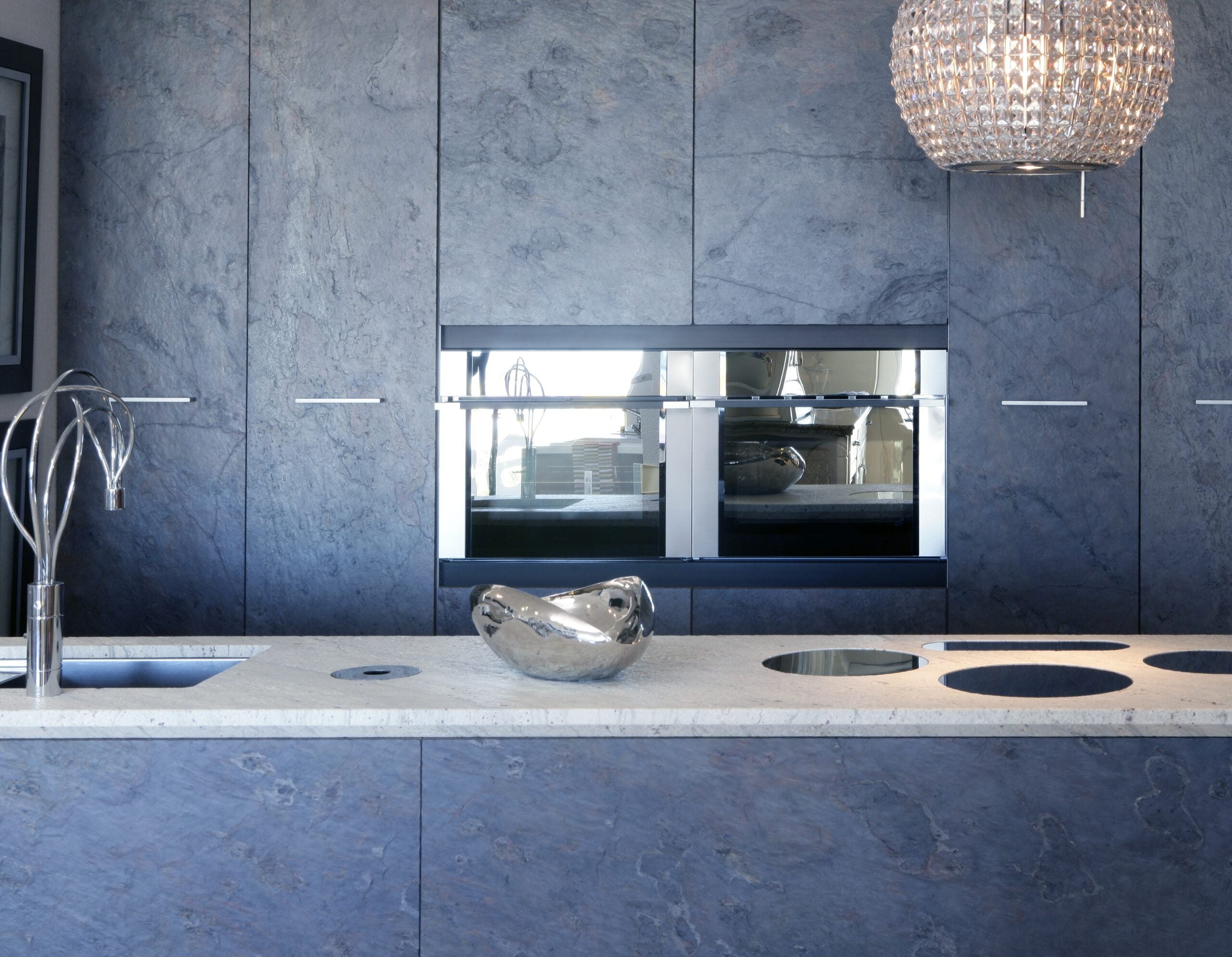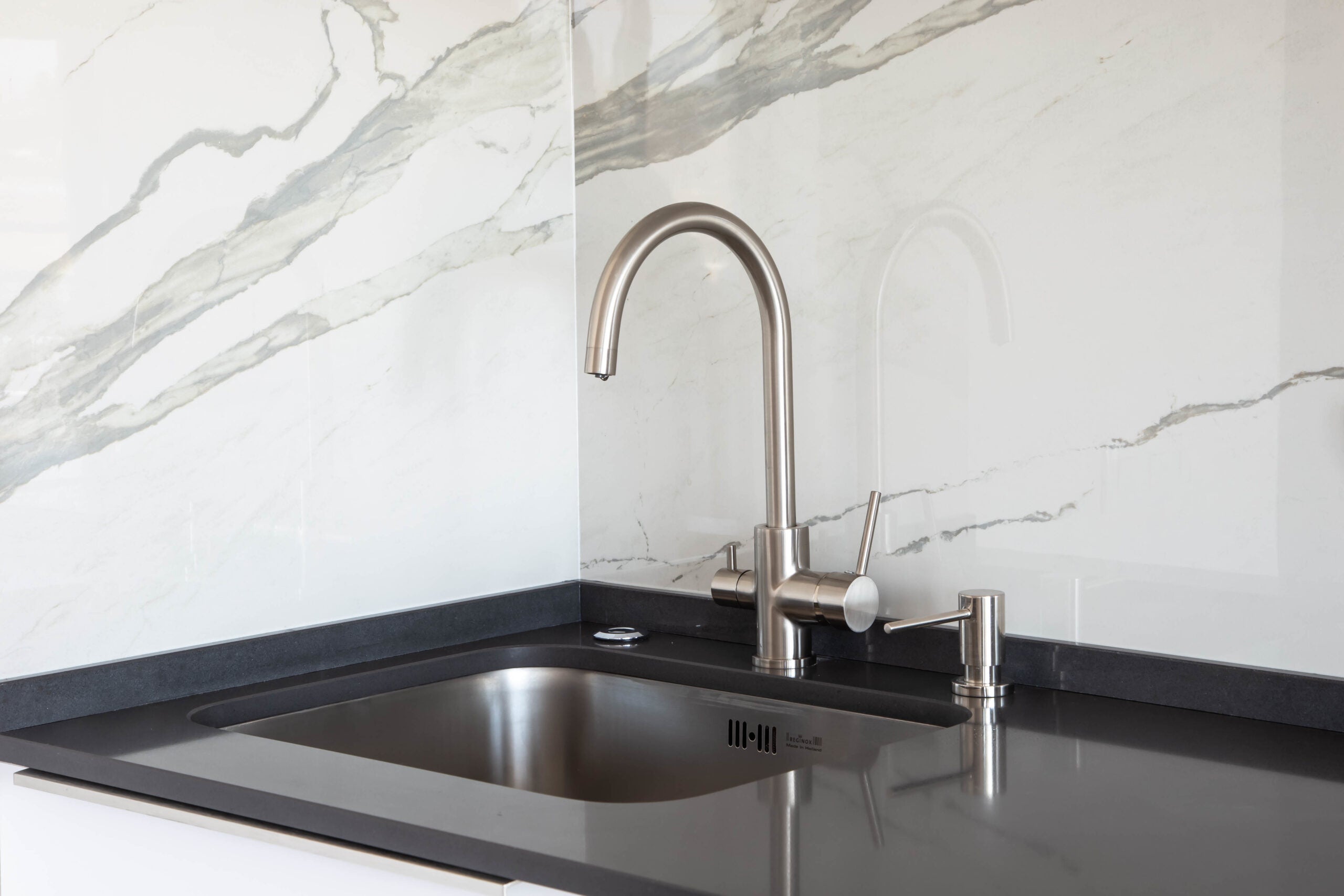Your Help Desk guide to picking the right kitchen counters
What’s the difference between quartz and quartzite? Which materials stain easily? Get more home improvement advice at realestate.boston.com.

A collaboration with The Boston Globe’s Help Desk:
The kitchen counter is where the action is, the reliable platform upon which we build everything from school lunches to Thanksgiving dinner. Doused with errant splashes of coffee and wine, splattered with olive oil and other cooking shrapnel, kitchen counters pay their dues and look good doing it. They form the visual and functional foundation of the hardest-working room in your house — so when it’s time to replace them, you want to choose the right surface.
And that’s not an easy decision to make. There are more options than ever, and there isn’t a single best countertop surface, said Sue Booth, owner and senior designer at Vintage Kitchens in Concord, N.H. “Just like when you’re picking anything else in your life, you have to pick the materials that suit your temperament, that suit your aesthetic, and suit your lifestyle,’’ she said. “It doesn’t mean the others aren’t good; it just means there’s one that’s best for you.’’
Ninety-three percent of homeowners who remodel their kitchen update their countertops, according to Houzz’s 2019 Kitchen Trends Study, which surveyed 1,337 homeowners on their recent or current kitchen remodeling projects. And for the first time in the annual study, the use of engineered quartz eclipsed all natural stones combined. The low-maintenance, man-made blend of crushed quartz, pigments, and resins was the surface of choice for 48 percent of new countertops, up from 41 percent in 2017.
Natural stones accounted for 43 percent of countertop upgrades in the survey: Granite got the nod for 30 percent of new counters, down from 40 percent in 2017, while quartzite, marble, and soapstone were other popular choices.

Brian Spellman, director of stone operations at Metropolitan Cabinets and Countertops in Norwood, has seen those preferences play out in the marketplace. “We sell much less granite than we used to,’’ Spellman said. While it’s probably the most durable material, he added, “it’s losing popularity because it’s considered ‘busy’ by many consumers who want a simpler look.’’
Spellman has seen “a real trend toward engineered quartz counters,’’ but even some natural stone buyers are looking beyond granite. “As kitchens have evolved into the focal point of the home, people are investing more into high-end materials,’’ Spellman said. Even if they choose engineered stone for the perimeter of the kitchen, he added, homeowners might use a natural marble or quartzite as a dramatic accent. “Islands are now ‘wow’ factors in the home.’’
Trends aside, what kind of countertop should you consider for your kitchen? A lot of it comes down to personal aesthetics. Booth admitted that she’s biased toward the look of natural stone, such as granite or soapstone. But many of Booth’s clients are asking for engineered quartz. “They’ve been told everywhere that it’s better than anything else,’’ she said. Booth educates clients on each material’s merits. “If they love the aesthetic [of quartz], then it’s not my place to try to convince them otherwise,’’ she added, “but most of the time, if the motivation is that they want it because it’s easier than granite, that’s an easy thing for me to talk to them about.’’
Booth says granite isn’t as high maintenance as people fear. Like any porous stone, it needs a quick coat of sealant once in a while so it won’t absorb stains. “Just let the counter tell you what it needs,’’ Booth said. “It’ll start to look different, it’ll start to behave a little differently — you might not be able to wipe it up quite so easily, water won’t bead up on it — and when that happens, it’s time to give it a good cleaning and seal it again.’’
For those who find that meager maintenance daunting, engineered quartz behaves more like a care-free Corian counter, but with sparkly stone highlights. “With the quartz material, you really don’t have a lot of maintenance; you don’t have to seal it,’’ Booth said.
However, because most engineered stone has a polyester or acrylic binder holding everything together, it’s smart to keep a trivet nearby for hot pots and pans, which you don’t need to worry about with natural stones.
Another advantage of engineered quartz is the consistency between showroom and reality. Every piece of natural stone is unique, which means it’s crucial to visit a distributor and select a slab in person. “You really do walk the stacks like you’re at the library to pick out a book,’’ Booth said.
“There are granites that have tight particulates, like Stanstead Gray — that’s a very tight-grained granite,’’ Booth said. Others have more movement, with dramatic, vibrant veins. “Some of them look like they should hang on a wall; they look like a piece of abstract art.’’ If the slab you want is available, you’ll reserve it and have it shipped to your fabricator, who will take care of templating and installation.
You’ll also need to choose a finish. Most stone slabs you see are polished for a shiny, high-gloss finish, Booth said. Honing, on the other hand, produces a more matte appearance. “I tend to like [a honed finish] in an old house. It’s a little more subtle,’’ Booth said. A third option is a textured finish, often called antiqued or leathered stones, whose water jet-roughened surface can create a more rustic look.
Booth is even more fond of the soft gray look and feel of soapstone. “I think it’s exquisitely beautiful,’’ she said. Like granite, soapstone is highly heat resistant, but its nonporous nature makes it more resistant to stains.
Soapstone is also warmer to the touch than other cold stone slabs, with an almost silky feel — but it’s soft enough to suffer dents under vigorous wear. “If you slide a pottery dish across your soapstone counter, you will see scratches,’’ Booth said. “You can remove those scratches or you can choose to live with them, but if the idea of those scratches is an issue for you, you might want to reconsider soapstone.’’
It’s still not as soft as marble, however. Booth said she doesn’t use marble in a kitchen unless clients ask for it specifically — and even then, she sends them home with a sample to make sure they understand its fragility. “When it’s polished and you put anything acidic on it, it will take the polish off,’’ she said — what’s known as etching. Hard, iron-rich water can stain the surface over time, and marble can also “bruise’’ from a forceful impact, leaving a white bloom that won’t go away.

One reason quartz is so popular is that it can look an awful lot like white marble, without being as finicky. “If someone wants a marble in their kitchen, and we can put an engineered stone in that looks like marble, I know they’re going to be happier with that,’’ Booth said.
When her niece wanted to get Carrara marble counters for her kitchen, Booth sent her home with a 12-inch-square sample to place in her kitchen’s busiest spot — an exercise that changed her niece’s mind. “We found an engineered stone that was visually appealing that will hold up to her children’s coloring and activities and enthusiastic participation in cooking,’’ Booth said. “She was smart enough to realize that, ‘I know I could do all of that on Carrara marble, but I would be neurotic about it the whole time.’ ’’
Engineered and natural stones — and, for that matter, solid-surface acrylics like Corian — are all in the mid-to-high price range. “You can get new counters for a few thousand dollars using a low-priced granite or spend tens of thousands using a high-priced marble,’’ Spellman said. “Most of our customers spend between $4,000 and $10,000 for new counters.’’
At the more affordable end, wood or bamboo butcher block offers a warmer alternative to stone that can be cut and installed by a homeowner using regular tools. Unless the surface is treated with a food-safe varnish, butcher block requires regular oiling to keep the wood moisturized. “If it dries out, all those glue joints start to separate, and you get staining,’’ Booth said. It’s vulnerable to burns, nicks, and stains, but they can be sanded out in the same way you might refinish hardwood floors. “If you maintain it, it should last a long time for you. It’ll be a beautiful counter.’’
And sometimes an attractive, durable laminate countertop (think Formica) is all a kitchen needs. Booth recalls a client whose budget constraints meant choosing between premium countertops and warm wood floors. “I really wanted them to put an antique heart pine floor in that part of their house, because it was perfect for their house. And I said: ‘Why not just wait and not do soapstone right now? Let’s just put in a nice Formica counter for now, and I’ll see you in five years,’’’ Booth said. The homeowner finally got his soapstone counters seven years later — but he was pleased with the Formica in the interim, not to mention the floor he could afford because of it. “The floor is a much more long-term, harder-to-change choice than a laminate countertop.’’

Like butcher block, laminate counters are DIY-friendly and can be installed with regular tools, but they are not heat-resistant, and can develop adhesion problems around the sink or seams.
There are myriad other materials you can use, some more niche than others. They include pricier stones like slate or serpentine, metals like stainless steel or copper, recycled paper or glass, durable porcelain slabs, or DIY tiles. Booth said concrete is more popular on the West Coast, and offers striking possibilities in the hands of a good fabricator. “You can make any color, you can change texture, you can put things in it,’’ she said.
To settle on the right material, Booth said, you need to evaluate how you live in your kitchen and balance that with your sense of style, tolerance for maintenance, and budget. “What you’re trying to do is understand how a material functions and whether that function is the best for your lifestyle,’’ Booth said.
Jon Gorey blogs about homes at HouseandHammer.com. Send comments to [email protected]. Follow him on Twitter at @jongorey. Subscribe to our free real estate newsletter at pages.email.bostonglobe.com/AddressSignUp.






Conversation
This discussion has ended. Please join elsewhere on Boston.com